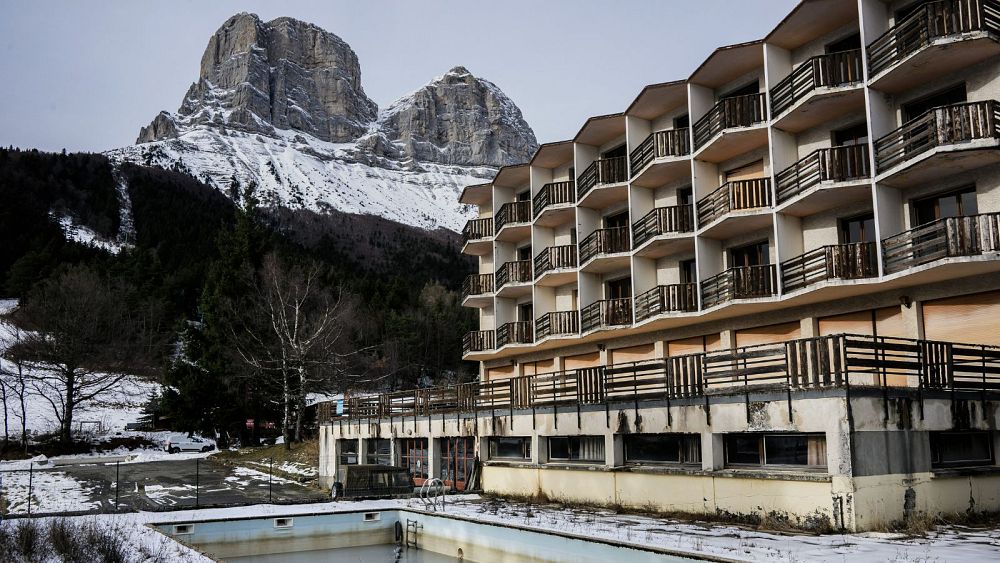The hotel is closed and the ski lifts are at a standstill, but at the foot of the French slopes an electric bike shop is preparing to open.
Towering above the scene in the Vercors mountains are les Deux Sœurs, their twin peaks basking in the sun. The first snow of the season has not stirred the chair lifts - motionless since late 2018 - into action.
Now the resort of Col de l’Azelier is looking for a second wind.
Why are French ski resorts closing?
Taz and Obi, Myriam Estades' two dogs, are having a blast in the fresh snow.
Estades is happy to live in Château-Bernard, amid the “magnificent” setting where she learned to ski as a child decades ago.
Her wish is "for the resort and the environment to come back to life, whether it is for skiing or not, because it has become a dormitory town".
At 1,154 metres above sea level, the Col de l'Arzelier was a family resort built in the 1960s, popular with locals and children who found their feet in the mountains.
It is one of the 186 ski resorts closed in France since the 1970s, according to Pierre-Alexandre Metral, a geography PhD student at the University of Grenoble who studies redevelopment strategies.
There are a number of reasons why Col de l’Arzelier shut, explains Jacques Postoly, former president of the local ski club, and mayor at the time of its closure.
Climate change played a big part, he says, after several seasons without snow. Problems over private land and a lack of seasonal accommodation also informed the decision.
And the town of Château-Bernard, with a population of 300, could not keep up with the maintenance of the expensive and ageing equipment.
“It’s not easy, when you are in love with this area and a skier like I was,” sighs Postoly.
The new local council, which started in 2020, must take up the challenge.
"It's a bit tricky," says the first deputy mayor, Anne Deprez. Given the economic necessity and changing climate, "we decided to go in another direction - much more focused on the natural and untouched side of the mountain," she explains.
How is the resort embracing its natural side?
Snowshoeing and ski touring have replaced (downhill) skiing at the resort.
At the top of the ski lift, the Soldanelle shelter promises an "exceptional panorama", a stay in a yurt and a "car-free" experience. It's ideal for lovers of hiking and mountain biking - including young families.
The old grocery store has been renamed ‘Altebike’. Pierre Menade and his colleague Thomas Honoré are getting ready to offer rental electric bikes here in the spring.
"We told the city hall that we wanted to revitalise the local area and its architectural heritage; that we could develop all these things. And so we were rather well received, they offered us the premises straight away.”
A little further on, a pasta factory is to open in a former ski equipment rental room.
But change is sometimes difficult, especially for those who have known the good old times of downhill skiing.
A new lease of life for the hotel
The imposing Hôtel des Deux Soeurs, for sale, faces the slopes. Built by one of the resort's founders, it closed in the 2000s.
The building was chosen last year for an architectural project by students from the Auvergne-Rhône-Alpes region for a European competition, called the Solar Decathlon.
They imagined a rehabilitation between economic activity and permanent housing, inspired by the "ongoing residentialisation", says architect Christophe de Tricaud, who helped supervise the project.
According to him, "about 30 per cent of the tourist accommodation is permanently inhabited on the pass".
"We think that this residentialisation could very well continue and intensify, especially in view of climate change and the habitability of cities, particularly Grenoble," he continues.
For him, the mid-range mountains could "quite easily become a climate refuge" in the future.


